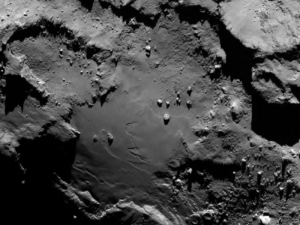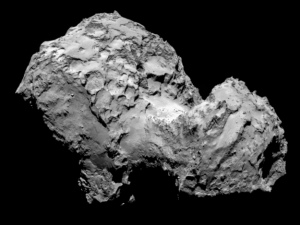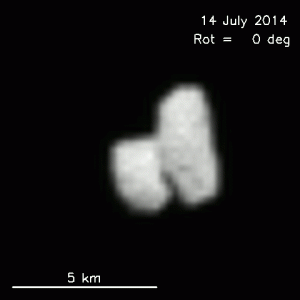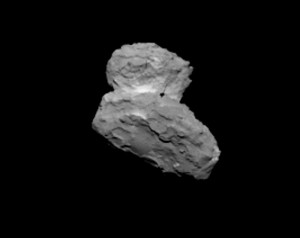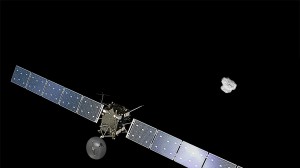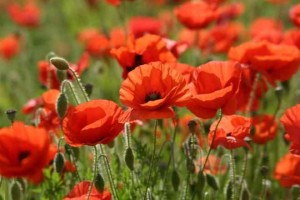I love kedgeree: quick to make and so tasty. Here’s my version of the Anglo-Indian classic. It involves a little bit of juggling to get the cooked, skinned fish, the boiled eggs and the rice ready at the same time, but it’s very easy. The spice measurements are guesstimates as I just chuck a load in that seems right. Serves 2, with some left over (it freezes well, apart from the eggs, which go rubbery—so eat all of those first time round!).
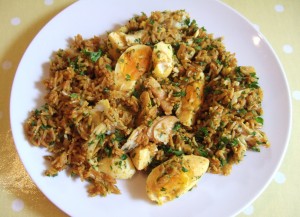
Kedgeree.
1 large fillet undyed smoked haddock with skin on (about 400 g)
4 eggs
200 g brown basmati rice
big knob of butter
1 tbsp ground cumin
1 tbsp ground coriander
1/2 tsp ground turmeric
1/2 tsp ground chilli
salt and freshly ground black pepper
large bunch of flat leaf parsley
Fill a large saucepan about a half full with water, and bring to the boil.
In a small saucepan, bring some water up to the boil into which to boil the eggs.
Reduce the water in the large pan to a simmer and poach the haddock (I cut it into two or three sections for ease of handling) in the water for about 5—6 minutes or until the flesh loses its translucence.
When poached, take the fish out of the water and drain—don’t throw the water in the pan away. Bring this fishy water up to the boil, add a pinch of salt and then add the rice (the rice will taste extra yummy cooked in the fishy water, even if it looks a bit scummy). Stir the rice around to make sure it doesn’t stick to the bottom of the pan or clump together while cooking.
Put the eggs in to boil in the smaller saucepan.
Skin the fish and break it into rough flakes, and keep it warm. (I put it on one of the plates we’re eating off and upturn the other over it so it doesn’t dry out, and put it in an oven that has been warmed but with the heat now turned off; the cats gets the fish skin).
Strip the parsley leaves off the stalks and chop roughly.
Give the eggs 8 or so minutes to hard boil with a slightly soft centre. When cooked, shell and cut into quarters.
When the rice is cooked, which should be about the same time that the eggs are ready, drain it and quickly rinse under hot water. Leave it in the sieve to drain. Put a big knob of butter in the rice saucepan, then add the spices and cook briefly over a medium heat. Return the rice to the spicy buttery mix in the pan and stir around to mix the spices through well.
Add the flaked fish and the parsley to the rice mix and stir to combine. Add the quartered eggs and gently stir through (they’ll break up if you’re too rough). Season with salt and masses of freshly ground black pepper, and serve. I like it with a big dollop of brinjal pickle; plain yoghurt goes really well with it if you are not too keen on dry rice dishes.
This is the first time I’ve written down a recipe that I do ‘off the cuff’—I now have added respect for cookery writers, because it’s not nearly as easy as I blithely thought it would be.
